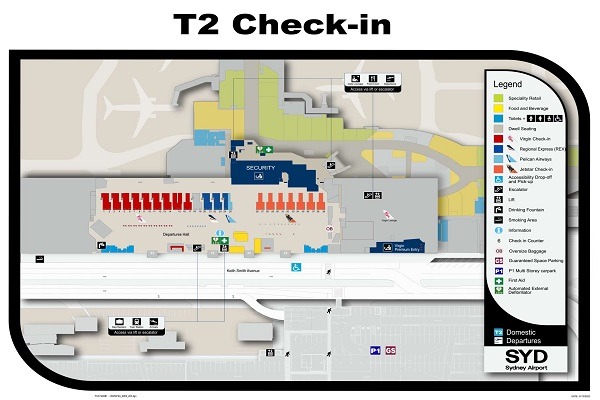Sydney Airport is a bustling gateway to Australia, connecting millions of travellers to various destinations worldwide. Navigating its vast expanse, especially between the International and Domestic Terminals, can be daunting for first-time visitors. This writing will take a detailed look at the layout of Terminals map Sydney airport, providing you with the information you need to find your way around both terminals confidently.
1. The International Terminal: A Global Hub
The Terminals map Sydney airport is a bustling hub of activity, catering to travellers from around the world. As you enter the terminal, you’ll be surrounded by many shops, restaurants, and duty-free stores. The airport is organized into several key areas:
1.1. Departures Area:
- Check-In Counters: Located on the ground floor, these counters are where you’ll check in for your international flight. Ensure you have your passport, ticket, and any required visas.
- Security Screening: After check-in, proceed to the security screening area. Be prepared to remove your shoes, belts, bags, and electronic devices for a smooth process.
1.2. Retail and Dining Zone:
- Once through security, you’ll find many shops and dining options. From high-end boutiques to quick bites, take some time to explore and make any last-minute purchases.
1.3. Lounges:
- International travellers often have access to airline lounges. If eligible, these spaces offer a comfortable retreat with showers, Wi-Fi, and complimentary refreshments.
2. Boarding Gates:
Boarding gates are organized numerically, and extensive electronic screens provide real-time information about departure times and gate changes.
2.1 The Connection: Moving Between Terminals: The airport provides a seamless connection if you have a connecting flight between the International and Domestic Terminals. Follow the marked signs for “Flight Connections” after clearing customs. There are several options for making the journey:
2.2. Airside Bus: An airside bus service operates between the International and Domestic Terminals, allowing passengers to transfer without going through security again.
2.3. Train: The airport train line connects the terminals, providing a quick and efficient transfer option. The stations are located directly beneath each terminal, and trains run frequently.
3. The Domestic Terminal: A Gateway to Australia
Upon arriving at the Domestic Terminal, you’ll find a different atmosphere catering to domestic flights within Australia. Here’s a breakdown of key areas:
3.1. Check-In and Security: Check-in counters are on the ground floor, similar to the International Terminal. Follow the airline’s guidelines for baggage and documentation. Afterwards, proceed through security for domestic flights.
3.2 . Retail and Dining: The domestic terminal place also provides a wide variety of shops and dining options, providing ample options for shopping and dining. Let me know if you need further assistance, allowing you to relax before your domestic journey.
3.3. Boarding Gates: Like the International Terminal, boarding gates are numerically organized. Keep an eye on information screens for any updates or changes.
4. Tips for Smooth Navigation:
4.1. Allow Sufficient Time:
Sydney Airport can be busy, so arriving with ample time is advisable, especially for international flights.
4.2. Utilize Technology:
Download the airport’s app for real-time updates, including gate changes and flight statuses.
4.3. Follow Signage:
The airport is well-signposted. Follow the signs, and don’t hesitate to ask airport staff for assistance if needed.
Final Thought:
Sydney Terminals map Sydney airport International and Domestic Terminals are designed to provide a seamless travel experience. By understanding the layout and following the provided tips, you can confidently navigate the airport and focus on enjoying your journey. Safe travels!

